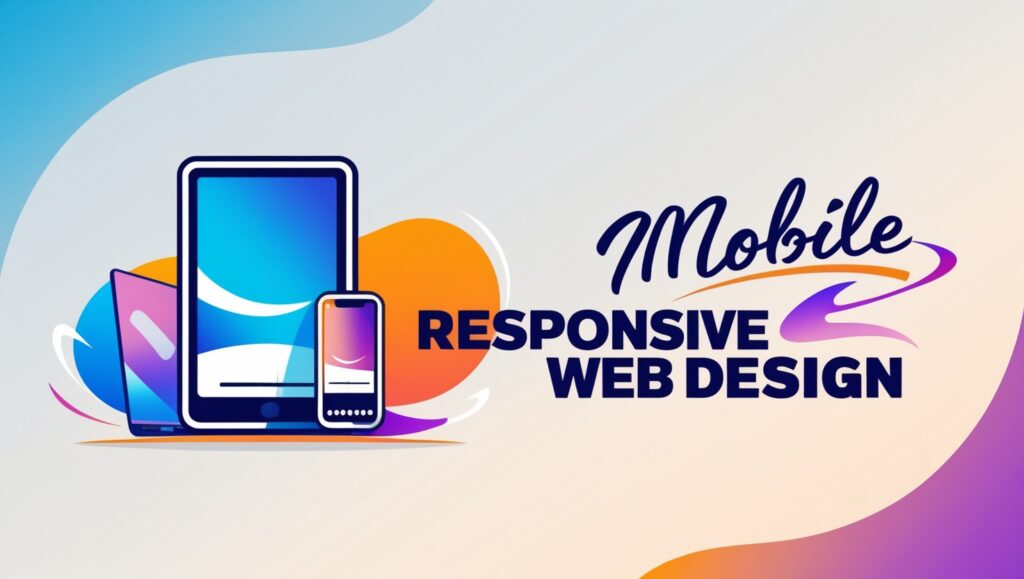What is responsive web design?
Responsive web design means you can view the website from every device seamlessly. A responsive web design has a unified URL, media queries, fluid images, and flexible layouts. A responsive web design is so important because it drives traffic and it can improve the business, improve the user experience (UX), be SEO-friendly, etc. Let’s go into the details of the Importance of responsive web design.
The importance of responsive web design
There is so much importance to responsive web design. It improves the user experience, has the best SEO performance, makes the brand image stronger, and most of the traffic comes from mobile. You will get so many benefits from responsive web design. The benefits you will get from a responsive web design are
- Mobile traffic: Because of fast loading, simple navigation, and mobile-friendly menus, etc., people who use mobile phones feel comfortable, and for a seamless web design, they get attracted to the website, so sometimes they can visit again and again. If you want to check page speed, you can use tools like ImageOptim and TinyPNG. For the page speed, you can also enable browser caching and CSS, Javascript, and HTML, and you can use a CDN. Because of this advantage, you will get so much traffic from mobile users.
- SEO-optimized website: For ranking in the search engine, a responsive web design has a great impact. That’s why you have to use a responsive framework, and you have to check how responsive your website is. You can use tools like Google’s mobile-friendly test. Use SEO-friendly URLs for better results, and use some tools like Google Analytics.
- Flexibility: Because of responsive web design, you will get better flexibility. It is so important for adjusting on different screens. Flexibility recommends images and videos with the right scale. Use the right typography for flexibility because it improves better readability from every device. Adjusting the menus is so important because you have to make sure they get access from every device. Position the container and layout the perfect scale, which can be adjusted on every device, and use tools for checking if it is flexible on every device or not
- Unified analytics: Unified analytics is quite important for a responsive. Because of analytics, you can get so much data from all devices and platforms, which can help you understand the user experience. You can use some tools for tracking the behavior of users: Google Analytics 4, Adobe Analytics, or Mixpanel. There is also a huge need for tracking the switch between other devices to another device. In the end, just do not forget to set up a clear goal.
- Better than your competitors: fast loading, best navigation and menu, modern, attractive design, advanced technology and functionality, SEO optimized, so much traffic, mobile-first site, strong brand identity, and security like an SSL certificate can help you rank better than your competitors.
- Future-proofing website: A responsive web design can lead to future-proofing websites. Because of seamless user experience, modern, attractive, and catchy designs, technology, functionality, core web vitals, optimized robust SEO, faster loading, mobile-friendly designs, better security, automation, or AI, future-proof content can help you to get a future-proofing website. That will definitely stand in the future.
- Cost efficiency: Creating a responsive web design can help you with cost efficiency design.
- Time efficiency: It will also be time efficient if you create a responsive website.
It was all about the details of responsive web design and the importance of responsive web design. From this article, you will get all the tactics for web design.
Frequently Asked Questions
What is responsive web design?
Responsive web design refers to the approach of designing websites that adapt seamlessly to different screen sizes and devices. It ensures that a website provides an optimal user experience on desktops, tablets, and mobile phones by using flexible layouts, fluid images, and CSS media queries.
Why is responsive website design important?
Search engines like Google prioritize mobile-friendly websites, making responsive design essential for better SEO rankings. This helps businesses increase traffic, improve conversions, and enhance their online presence.
What are the 3 basic things required for responsive web design?
The three fundamental elements required for responsive web design are:
- Flexible Layouts: These allow the website’s structure to adjust dynamically based on the screen size using relative units like percentages.
- Media Queries: These CSS rules help tailor styles for specific device widths and orientations, ensuring a consistent design.
- Fluid Images: Images scale proportionally to fit their container, preventing distortion or overflow on smaller screens
What happens if a website is not responsive?
If a website is not responsive, users may face issues like distorted layouts, unreadable text, or broken navigation on devices other than desktops. This leads to poor user experience, higher bounce rates, and potential loss of customers. Furthermore, search engines are less likely to rank non-responsive websites, reducing visibility and traffic. Businesses risk falling behind competitors who offer mobile-friendly designs.
What is the impact of responsive web design?
Responsive web design positively impacts businesses and users by ensuring accessibility and consistent design across all devices. It boosts SEO rankings, increases mobile traffic, and enhances user engagement. A well-designed responsive site can strengthen brand image and lead to better customer satisfaction, ultimately driving sales and growth.
Why is responsive website design important for SEO?
Responsive web design refers to the approach of designing websites that adapt seamlessly to different screen sizes and devices. It ensures that a website provides an optimal user experience on desktops, tablets, and mobile phones by using flexible layouts, fluid images, and CSS media queries.


